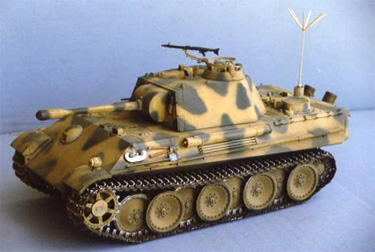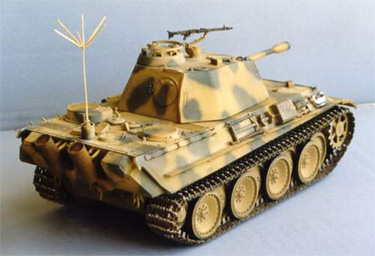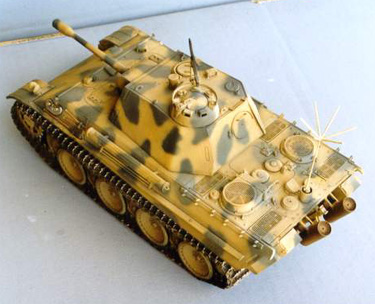
Model by Matt Ward.
Panzerbeobachtungswagen Panther
Model by Matt Ward.

Observation vehicles for the artillery were used by Germany throughout World War II. The most common vehicles used were remanufactured battle tanks with their main armament removed to and replaced with a dummy gun. Rheinmetall-Borsig and Anschütz collaborated on the design for the Panzerbeobachtungswagen Panther. Several optical devices, including a 1.32m-based rangefinder, two TSR, 1 observation devices, and the ubiquitous scissors periscope, provided the additional sighting capabilities required by an artillery observation vehicle. Direction indicators were provided for both the commander and observer. Anschü contributed the "Blockstelle 0" (an automated plotting board) for the vehicle, mounting it in a shockproof mount in the turret. This plotting board allowed firing instructions to be issued in the absence of a map.
According to The Encyclopedia of German Tanks of World War II a total of 41 Panzerbeobachtungswagen Panther were converted from battle tanks in late 1944/early 1945. Given the volume of production, it seems probable that some would have seen action. Spielberger in Panther and Its Variants indicates that none of them were used in service, but were used only for testing purposes.
Model by Matt Ward.

To provide communications with the artillery, the Panzerbeobachtungswagen Panther was fitted with a FuG5 and FuG7 radio. Two aerials were required with this communications package. The star areial was mounted in the center rear of the engine deck, while the 1.4m rod aerial was fitted to the right side of the turret roof.
Model by Matt Ward.
